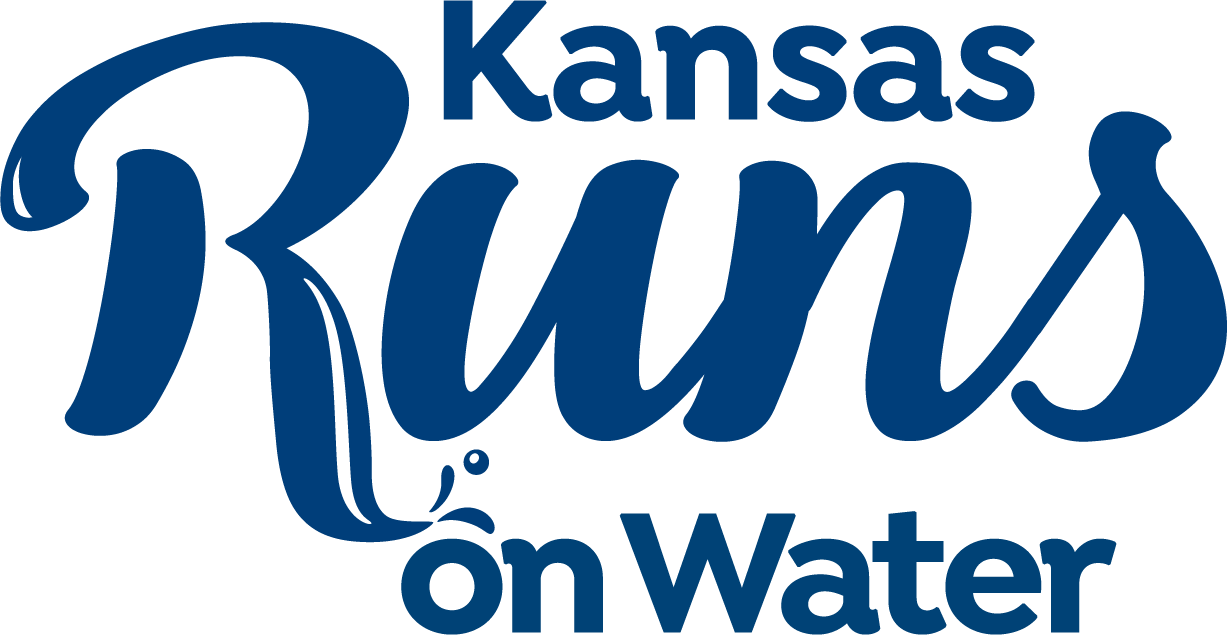©2021 Kansas Water Initiative
Kansas has 24 Reservoirs.
The High Plains Aquifer lies beneath 8 states including Kansas.
There are 520 square miles of water in Kansas.
The High Plains Aquifer supplies 70 to 80% of the water used by Kansans each day.
The Kansas River is also known as the Kaw.
There are more than 10,000 miles of streams and rivers in Kansas.
Kansas Water is used by many entities. Irrigation uses 84%. Municipal uses 11%. Industrial uses 3%. Recreational and stock water uses less than 1%.
Per capita, water usage ranges from 98 gallons a day in eastern Kansas to 274 gallons a day in western Kansas.
There are 1.5 million acres of irrigated farmland in southwestern Kansas.
90% of all water used in Kansas is pumped from underground.
Household water use has jumped 500% in the past 50 years.
The wash cycle on a family’s automatic clothes washer uses more water in 30 minutes than a pioneer family used in one whole day.
Just one inch of water over one acre of land equals 27,152 gallons.
One acre of irrigated corn in western Kansas uses over 400,000 gallons of water per season during a dry year.
Each additional inch of water made available to a growing wheat crop on dryland will increase yields by 4 bushels per acre or 640 bushels for a quarter section of land.
Oil and gas are important natural resources; however, we cannot drink them. Water is truly our most important natural resource.
A steadily dripping faucet can waste 2000 gallons of water a year.
The Ogallala Aquifer supplies water for 20% of the corn, wheat, sorghum and cattle produced in the U.S.
The vast freshwater reservoir of the High Plains Aquifer formed 5 to 10 million years ago as streams draining from the Rocky Mountains deposited water in the clay, sand and gravel beneath the Great Plains.
An irrigated field in southwest Kansas produces more than eight times as much corn per acre on average than a field that isn’t irrigated, according to the Kansas Department of Agriculture.
The Kansas Water Appropriation Act requires that all water right holders report their water use annually.
23 of Kansas’ 28 state parks offer convenient access to many of the state’s federal reservoirs and state fishing lakes.
A steadily dripping faucet can waste 2,000 gallons of water a year.
As water flows across our watersheds it inadvertently transports pollutants like bacteria, oils and sediments which harm our waterbodies.
Because ground water is relatively inaccessible and moves slower than surface water, quality issues sometimes take years to recognize.
Many of the lakes and reservoirs in Kansas are used for public drinking supplies, making these the most crucial waterbodies to monitor for pollution.
Although ground water in shallow aquifers may recharge and drain from years to decades, deeper ground water may be thousands to millions of years old. This ground water is sometimes called “fossil water”.
Kansas has an estimated 435,000 acres of wetlands. Wetlands create a distinct ecosystem that functions to filter and improve water quality.
Aquatic macroinvertebrates are good indicators of water quality because they spend most of their lives in water and are known to have various levels of tolerance to pollution. Example, if a stream sample of aquatic macroinvertebrates were composed entirely of tolerant species, it could be assumed that the water quality is poor.
The state’s 2020 303(d) list identifies 486 station/pollutant combinations of water quality impairment on Kansas lakes, wetlands, and stream systems (watersheds).
The water quality impairments encompass 2,278 stream segment/pollutant combinations and require the development of Total Maximum Daily Load plans to address the offending pollutants.
86% of Kansas streams are deemed impaired for one or more of their designated uses, while 96% of lakes suffer from this same distinction.
Less than 1% of all groundwater on Earth is considered fresh and drinkable. This includes water beneath the ground!
Groundwater provides 41% of Americans’ drinking water.

